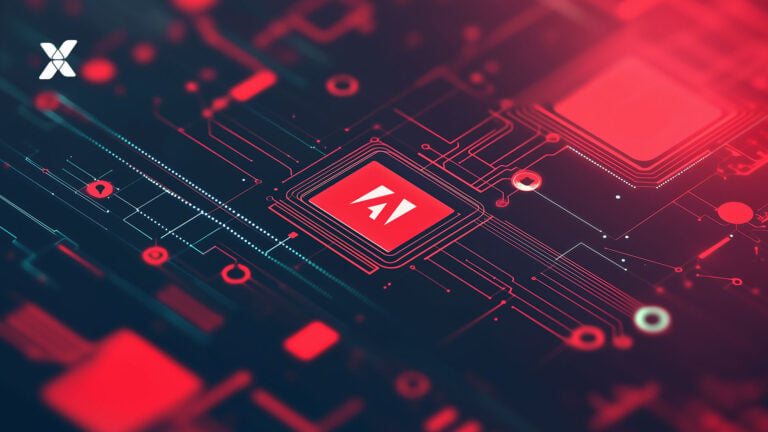Can headless commerce improve your Adobe (Magento) store and help grow your business? Is it the right choice for you?
TABLE OF CONTENTS
-
-
- What is Headless Commerce?
- What is Headless Adobe (Magento)?
- How is Headless Magento Architecture Different from Platform-Based Magento Architecture?
- What are the Benefits of Headless Magento?
- Are There Disadvantages to Going Headless with Magento?
- Is Headless Magento the Right Choice for Me?
- Are You Satisfied with the Speed and Performance of your Website?
- Do You Want to Improve Your Omnichannel Experience?
- Would You Like to Enhance the Usability of Different Devices and Boost Conversions?
- Do Your Long or Short-Term Goals Include Launching Third-Party Integrations or Features or Expanding to New Markets?
- Do You Want to Run Several Parallel Development Tracks?
- How Do I Get Started with Headless Magento?
-
As an Adobe (Magento) merchant, you’ve most likely heard the industry term “headless commerce.” Headless refers to separating the frontend and backend within the website architecture. Forbes found that headless technologies attracted over $1.65 billion in funding in the last two years.
Many popular brands and retailers have made the leap into headless, including Nike, Target, Under Armour, Overstock, Redbox, and more. It’s not surprising; headless commerce promises increased speed and agility that results in a better customer experience.
But is headless commerce the right choice for your Adobe (Magento) store?
Let’s look at it together to understand whether Headless Magento is your cup of tea.
What is Headless Commerce?
To explain the headless approach, think about the experience of using a virtual reality (VR) headset. With the help of the VR headset, you fly in the air, ski down a mountain, and more. It may feel like you’re doing these things, but your physical body isn’t participating in the action.
Your brain is Adobe Commerce (Magento) in the VR headset scenario. Adobe allows you to choose a “physical body” that fits your business needs best.
In headless ecommerce, instead of a VR headset, we use API calls that help the backend (head) and frontend (body) communicate with one another.
What is Headless Adobe (Magento)?
We historically classify Magento as “platform-based architecture,” meaning you receive a complete ecommerce platform with a tightly integrated backend and frontend and many features out-of-the-box.
On the flip side, headless architecture utilizes the Magento backend as a content management system (CMS). The frontend remains separate to allow for deep customization without limitations set by the platform.
How is Headless Magento Architecture Different from Platform-Based Magento Architecture?
With a platform-based approach, your entire ecommerce solution operates as a single unit. This means that changing or altering any tool, function, or feature may affect another component in the system.
Usually, the frontend is responsive but tied directly to the backend, meaning the frontend design will appear proportionally on different screen sizes to boost the user experience.
However, headless Magento’s front and backend are entirely separate and use an API to communicate. You’re free to link several frontends or backends together.
What are the Benefits of Headless Magento?
Headless commerce and Adobe (Magento) enjoy a truly symbiotic relationship. While a headless CMS increases development speed, open-source Magento allows the headless approach to achieve its full potential.
- Increased speed: A separate frontend and backend take the pressure off your platform, meaning you enjoy increased speed and performance.
- Unique storefronts: With a headless frontend, you enjoy the freedom to create a design optimized for your customer experience. Without being tied to the predefined themes of Magento stores, your user experience (UX) and user interface (UI) become highly adaptable.
- True omnichannel: Headless commerce ensures you’re ready to meet your customers on any device they use. Connect a new “head” to your system!
- Faster development process: Your developers can work faster because the frontend doesn’t depend on the backend, and your team can work on both ends in parallel. Plus, your team can experiment on the frontend without worry.
- Flexible customization: Because making changes doesn’t affect the other end, altering and customizing your solution is much easier. Your team can test new technologies and features without worrying about the backend.
Are There Disadvantages to Going Headless with Magento?
Every approach to website architecture and development brings advantages and disadvantages. Going headless with Magento is no exception!
- Longer time-to-market: Because of the potential customization and technical work needed for a headless solution, the initial time-to-market may be longer.
- Increased resources needed: A headless solution may result in more project hours than a standard Magento store.
- More development needed: A headless Magento store is more complex by nature and requires additional development. By extension, the maintenance of a headless Magento store will also require additional effort.
Is Headless Magento the Right Choice for Me?
Before thinking of going headless with Adobe (Magento), consider the following five questions:
Are You Satisfied with the Speed and Performance of your Website?
Techies and ecommerce experts alike tout headless commerce because of the vast improvement in speed and performance. By separating the backend from the frontend, the end-user gets an app-like experience regardless of the device.
Because social media and video apps conditioned us to expect instant results, online shoppers anticipate the same from your website.
Do You Want to Improve Your Omnichannel Experience?
With responsive design in the rearview mirror, the demand for a seamless experience across channels places pressure on merchants. With headless, the Adobe Commerce backend stores all content and data. You can easily use your content and data within all touchpoints with customers, like smartphones, separate mobile apps, in-store screens, point-of-sale (POS) terminals, smartwatches, and more.
Furthermore, your staff will spend less time on content updates because the data is in one place. Plus, the quick onboarding of new channels provides you with more touchpoints for customers, and you’ll save time you previously spent enrolling and testing new channels.
Would You Like to Enhance the Usability of Different Devices and Boost Conversions?
Headless Adobe Commerce offers the possibility of deep personalization on your front end. Use different designs and unique messaging on multiple devices for your shoppers. Give your customers genuinely exceptional experiences and CTAs based on their localizations.
This also allows you to learn about your audience in more detail on all devices and target them with a specific strategy.
Because the development side is wholly divorced from the frontend, the content team doesn’t need to spend time making content that suits the needs of various devices.
Do Your Long or Short-Term Goals Include Launching Third-Party Integrations or Features or Expanding to New Markets?
Agile by nature, API-based commerce naturally helps with integrations and migrating data with other business solutions such as product information management (PIM) systems, enterprise resource planning (ERP), and customer relationship management (CRM) systems.
It works the same as quickly building new features, such as payment gateways, site search, product recommendations, AI and machine learning, and more. The headless approach takes less time than traditional enrolling businesses internationally due to the express content delivery and faster development.
Do You Want to Run Several Parallel Development Tracks?
When the frontend and backend depend on one another, your development team can finally set their own pace. Your team can complete different tasks and features simultaneously, and as a result, you boost your time-to-market significantly. It also gives flexibility in implementation and more straightforward customizations.
Did you answer yes to any of the questions? Consider adding headless commerce to your strategy if you’re a B2B, B2C, or D2C Adobe merchant (or a combination!).
How Do I Get Started with Headless Magento?
To reap the full benefits of a headless Adobe Commerce solution, you’ll need help from experts with a deep understanding of Adobe Commerce architecture. We’ve worked with Magento for over 14 years and launched hundreds of ecommerce solutions on the platform.
Our work speaks for itself. Talk to us today about going headless with Adobe Commerce!








